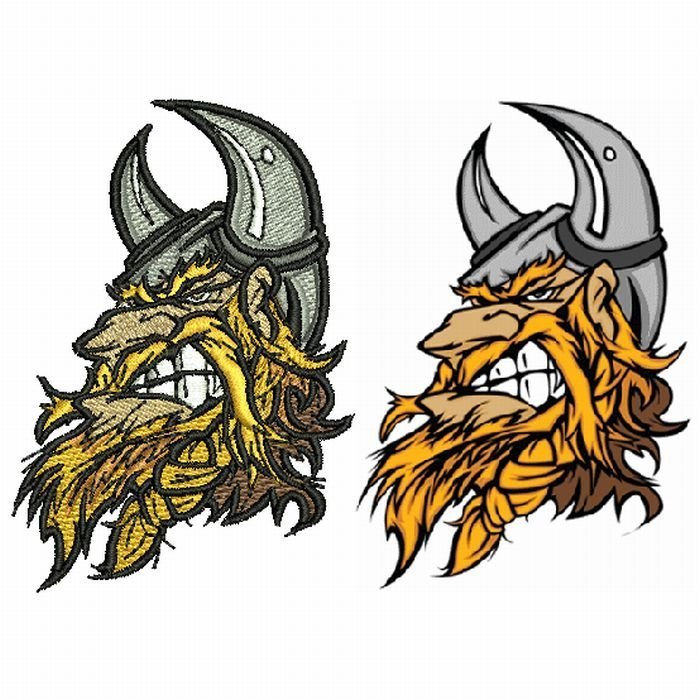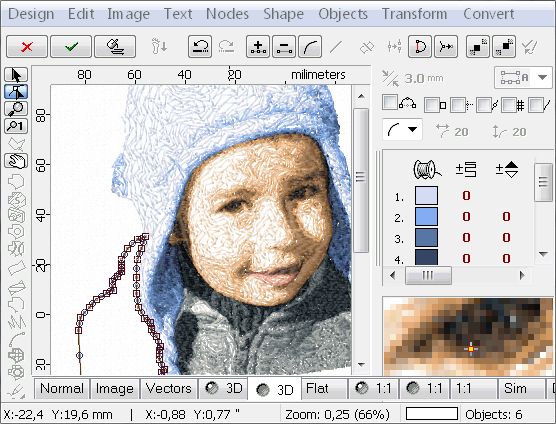Dependable Digitizing for Embroidery: Trusted by Professionals
Dependable Digitizing for Embroidery: Trusted by Professionals
Blog Article
Understanding the Embroidery Digitizing Process: Your Ultimate Guide
Embroidery digitizing is a meticulous craft that requires accuracy and proficiency to translate intricate layouts into digital formats for machine needlework. As artisans get started on this trip to master the embroidery digitizing procedure, a thorough understanding of the essentials establishes the foundation for excellence. Past the primary knowledge lies a realm of sophisticated software application, specialized tools, and nuanced methods waiting to be checked out. By delving into the nuances of digitizing, one can unlock a globe of imaginative opportunities and boost their needlework tasks to brand-new elevations.

Recognizing Needlework Digitizing Essentials
Needlework digitizing essentials create the structure whereupon detailed designs are translated right into machine-readable formats for specific stitching. This initial action in the embroidery digitizing procedure is crucial for making certain that the final stitched item is a loyal representation of the initial style. Recognizing needlework digitizing fundamentals includes understanding essential concepts such as stitch kinds, sew direction, density, padding, and pull compensation.
Stitch kinds play a crucial role in determining the aesthetic and textural end result of the embroidered design. By picking the proper stitch type, whether it be satin, fill, or running stitch, digitizers can attain the preferred effect and enhance the total quality of the embroidery. Furthermore, stitch instructions affects the flow and dimension of the design, while thickness identifies the spacing and protection of the stitches.
Furthermore, padding stitching provides security to the design by safeguarding the fabric and protecting against distortion throughout the embroidery process. Draw payment is another crucial factor to consider to neutralize the natural propensity of material to agreement when stitched. Understanding these embroidery digitizing fundamentals is fundamental for producing professional-quality stitched products.
Choosing the Right Digitizing Software Application
Choosing the proper digitizing software is an essential decision that considerably affects the performance and top quality of the embroidery digitizing process. Digitizing for Embroidery. When choosing the best digitizing software application, it is vital to take into consideration elements such as the complexity of styles you prepare to produce, the user-friendliness of the software program, the degree of customer support provided, and the compatibility with your needlework device
There are different digitizing software application options offered in the marketplace, ranging from fundamental programs for newbies to advanced software for specialist digitizers. Some preferred selections consist of Wilcom EmbroideryStudio, Hatch Embroidery Software, and PulseID. These software use a large range of devices and functions to assist you produce elaborate styles with ease.
Before deciding, it is a good idea to explore the various software choices through complimentary tests or trials to identify which one ideal fits your demands. In addition, reviewing testimonials and seeking referrals from seasoned digitizers can provide valuable understandings right into the strengths and weaknesses of each software plan (Digitizing for Embroidery). By meticulously reviewing your demands and contrasting the features of various digitizing software application, you can make an educated option that enhances your embroidery digitizing process
Digitizing Devices and Strategies

Optimizing Style Settings for Embroidery
Mastering the complexities of design settings is basic in attaining optimum cause the embroidery digitizing process, building upon the foundation laid by recognizing digitizing devices and methods. When enhancing style settings for needlework, it is necessary to take into consideration variables such as stitch kind, density, underlay, draw payment, and registration. Sew kind selection impacts the total look of the design, with alternatives like satin, fill, and running stitches using different textures and results. Density refers to the spacing and density of stitches, impacting the design's insurance coverage and durability. Proper rug sewing supplies security and prevents fabric distortion, specifically for intricate designs or on elastic materials. Pull settlement adjusts for textile stretch during sewing, making certain precise layout replication. Enrollment settings straighten different components of the style properly, preserving total style honesty. By fine-tuning these style setups, embroiderers can enhance the quality and accuracy of their embroidered developments.

Troubleshooting Common Digitizing Issues
When running into typical digitizing concerns during the embroidery procedure, it is necessary to comprehend the source and carry out efficient solutions quickly. One usual problem is stitch density problems, where stitches might be also dense, triggering the textile to tighten, or too sporadic, causing gaps in the design. Changing the stitch thickness setups in the digitizing software can assist settle this issue.
Another regular difficulty is string breaks throughout the needlework procedure. This can occur due to various reasons such as inaccurate stress setups, boring needles, or making use of low-grade string. Making certain appropriate upkeep of the needlework maker, consisting of normal needle adjustments and stress changes, can decrease the occurrence the original source of string breaks.
Moreover, design registration mistakes can cause misaligned components within the needlework layout. Examining the layout placement in the digitizing software and making necessary changes before sewing can assist in preventing this problem. By dealing with these common digitizing issues promptly and effectively, you can ensure a smoother needlework procedure and top notch completed products.
Conclusion
Finally, understanding the needlework digitizing process requires a strong understanding of the fundamentals, the best choice of software program, and expertise of tools and techniques. Maximizing style settings and troubleshooting usual digitizing problems are essential action in making certain top notch needlework results. By adhering to these actions diligently, one can attain precision and efficiency in the digitizing procedure.
Report this page